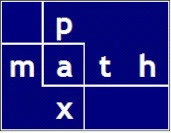In 2022, machine methods are ubiquitous.
A mere 5 decades back, 1972, machine methods meant calculators and mainframes. Ten years before that and centuries before, engineers relied on hand methods; their machine was the slide rule.
The slide rule has become obsolete and hand methods are largely replaced by software. I’ll not argue for the use of slide rules but I will make my case for hand (and mental) calculations. Of course, these are simply my observations and opinions.
1. Insight — years of performing calculations through training and, especially, experience develops insight into mechanics and structures.
2. Confidence — the ability to perform calculations allows an engineer to check/confirm/reject/resolve computer calculations and the calculations of other engineers.
3. Facility — an engineer should be able to reason through problems — in logical steps — from first principles to design and from design back to first principles.
4. Vision — given a structural design to accomplish, the structural engineer must be able to envision a version of the completed design and its mathematical performance (shears, moments, rotations, deflections, dynamics), and then proceed toward a provably acceptable design — must be able to mentally model the mathematical behavior of the entire structure.
5. Clarity and tenacity of thought — computerized analysis and design are often tedious, complicated, black box in nature, and subject to small mistakes with occasional outsized impacts. Mental ability and rigor are required to perform such work with accuracy. An engineer must be able to spot errors and inconsistencies.
6. Practicality — often, it is possible to develop by hand a closed-form solution. Closed-form solutions can make problem-solving easy, efficient, and intuitive.


